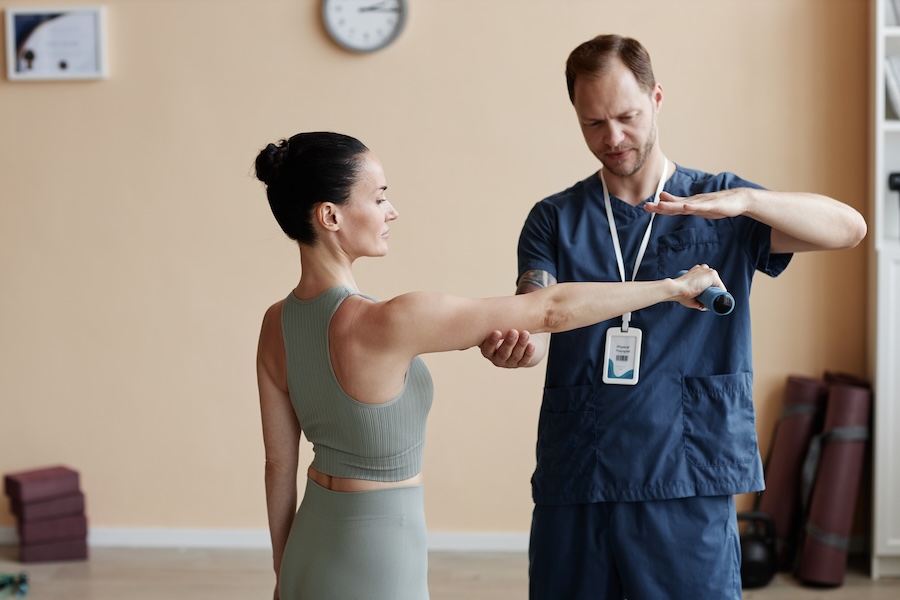Medical Insight Corner
The New Prescription for Survivors - Exercise as Medicine
Why oncologists are now writing fitness prescriptions alongside treatment plans.
For too long, the prevailing wisdom after cancer treatment was simple: rest. Patients were encouraged to recuperate, conserve energy, and avoid exertion. But a quiet revolution has been brewing in modern oncology, one that is fundamentally rewriting this long-held rule. Today, exercise is no longer merely a suggestion for recovery; it is increasingly being viewed as a prescription-strength therapy, a powerful intervention not just for regaining lost ground, but for actively preventing recurrence and improving long-term health.
The Unassailable Research
The shift in medical perspective isn't based on anecdotal evidence or wishful thinking. It's grounded in a robust and growing body of scientific research. Leading organizations in cancer care, including the American College of Sports Medicine (ACSM), the American Cancer Society (ACS), and the National Cancer Institute (NCI), have all unequivocally endorsed exercise as both safe and profoundly beneficial for cancer survivors.
The ACSM’s 2023 Guidelines on Exercise and Cancer Survivorship serve as a cornerstone of this new understanding, offering compelling data:
150 minutes of moderate activity per week is not merely a general health recommendation; for cancer survivors, it demonstrably lowers all-cause mortality by a significant 33–40%. This impact extends beyond simply feeling better, directly contributing to increased longevity. Furthermore, for breast cancer survivors, consistent physical activity has been shown to reduce the risk of recurrence by an impressive 35%, highlighting the profound protective effect of regular movement. Beyond the well-known cardiovascular benefits, engaging in strength training 2–3 times per week actively counteracts some of the most debilitating side effects of cancer treatment, including muscle loss, bone density decline, and adverse metabolic changes, thereby empowering survivors to reclaim their physical strength and resilience.
"Exercise is one of the most effective, under-prescribed interventions we have in oncology," states a leading ACSM researcher whose work has been instrumental in shaping these guidelines. Her words highlight a critical gap that modern medicine is now striving to close.
What It Means for Survivors: A Path to Power in Motion
For individuals navigating the complex journey after a cancer diagnosis, these findings offer more than just hope; they offer a tangible, actionable path forward. Programs like Bodyby.AI’s Power in Motion are designed to translate these scientific guidelines into practical, personalized strategies. Recognizing that each survivor's journey is unique, these programs adapt to individual challenges such as fatigue, limitations from surgery, or the risk of lymphedema.
The result is a safe, science-backed return to strength, a regimen that both doctors and survivors can trust. It's a testament to the evolving understanding of cancer care, where the focus extends beyond treatment to encompass a holistic approach to well-being, with exercise firmly at its core. The message is clear: for cancer survivors, movement isn't just an option; it's medicine.
The Call to Action: Making Exercise a Standard of Care
Despite the clear benefits, a significant gap exists between recommendations and reality. Only 30% to 47% of cancer survivors meet physical activity guidelines, with a major contributing factor being a lack of recommendation from oncology clinicians. Studies consistently show that over 80% of patients are interested in receiving exercise advice from their care team, yet only a small percentage of nurses (9%) and physicians (19-23%) refer patients to exercise programs.
The American College of Sports Medicine's "Exercise Is Medicine" (EIM) initiative, launched in 2007, offers a promising framework to bridge this gap. EIM advocates for incorporating physical activity assessment, advice, and referral as a standard part of patient healthcare. This approach, informed by successful clinical trials in primary care, mirrors the "5 A's" (ask, advise, agree, assist, and arrange for follow-up) used effectively in smoking cessation counseling.
What Oncology Clinicians Can Do Now: Assess, Advise, and Refer
The EIM approach in oncology involves three crucial steps:
Assess: Physical activity should be assessed as a vital sign at regular intervals during medical visits. This conveys to the patient that their healthcare provider believes exercise is crucial for their recovery and well-being. Incorporating physical activity into electronic health records, similar to blood pressure, can serve as a consistent reminder.
- Assess: Physical activity should be assessed as a vital sign at regular intervals during medical visits. This conveys to the patient that their healthcare provider believes exercise is crucial for their recovery and well-being. Incorporating physical activity into electronic health records, similar to blood pressure, can serve as a consistent reminder.
- Advise: Clinicians should advise patients to increase physical activity if they are not meeting recommended levels, leading to appropriate referrals.
- Refer: Patients require referrals to exercise programs tailored to their current activity levels, medical status, and preferences. While some patients may prefer self-directed exercise, evidence suggests that supervised exercise yields better outcomes, especially during treatment when side effects can be a barrier. Even for active patients, regular evaluation and referral to supervised programs can be valuable.
This three-step process should be repeated at regular intervals, particularly during significant medical encounters or when a patient's functional status changes. Developing a standardized process for physical activity screening and referral, similar to distress screening, is essential for integrating exercise into routine oncology care and survivorship plans.
For assessment, two simple questions about aerobic and resistance exercise can be used to compare current activity levels with recommendations. A third question, "Would this patient be safe exercising without medical supervision?", helps determine if a referral to an outpatient rehabilitation professional is necessary. If a patient is deemed safe for unsupervised exercise, oncologists can provide a standardized prescription form, downloadable from exerciseismedicine.org/movingthroughcancer, recommending up to 30 minutes of moderate-intensity aerobic activity three times a week and 20-30 minutes of resistance exercise twice a week. This prescription aligns with the minimal safe and effective dose to address anxiety, depressive symptoms, fatigue, quality of life, and physical function deficits.
Navigating the Landscape of Exercise Programming
Exercise programs for cancer survivors generally fall into two categories:
- HCP-Supervised Exercise Programs: These are delivered in formal medical settings like inpatient and outpatient rehabilitation units, often overseen by licensed healthcare professionals such as physiatrists, physical therapists, clinical exercise physiologists, nurses, and occupational therapists. These programs are ideal for patients with cancer-related comorbidities, physical impairments, or those requiring individualized plans for specific therapeutic outcomes (e.g., peripheral neuropathy).
- Community-Based or Home-Based Settings: These programs are offered in local gyms, community centers, or can be self-directed. They are often more accessible and affordable. Many community programs involve screening and approval by an oncology clinician, and exercise instruction is typically provided by qualified fitness professionals trained in cancer exercise. Examples include the UK's MoveMore program and LIVESTRONG at the YMCA in the United States.
A Collective Call to Action
To overcome these barriers and make exercise assessment, advice, and referral a standard practice in oncology, a concerted effort from multiple stakeholders is required:
- Oncology Clinicians: Regularly assess physical activity, advise patients to move more, and refer them to appropriate programs.
- Policy Makers: Develop policies and funding mechanisms to support the implementation of clinical and community exercise programming across the cancer continuum.
- Researchers: Conduct implementation science and health services research to improve infrastructure, reimbursement, and policies.
- Clinical Educators: Expand physical activity education in the training of all healthcare professionals involved in oncology.
- Health Care Providers: Seek additional specialized training in oncology exercise and rehabilitation.
- Mainstream Health and Fitness Industry: Develop high-quality, accessible programming for cancer survivors, recognizing them as a significant and underserved niche market.
- Oncology Patients and Survivors: Advocate for exercise assessment, advice, and referral to become a standard part of their care.
Oncology Patients and Survivors: Advocate for exercise assessment, advice, and referral to become a standard part of their care.
The exponential growth of exercise oncology research has provided clear guidelines and a roadmap for improving the physical and psychological outcomes for cancer patients and survivors. By embracing exercise as medicine, we can transform health and well-being from cancer diagnosis, through treatment, and for the balance of life.







